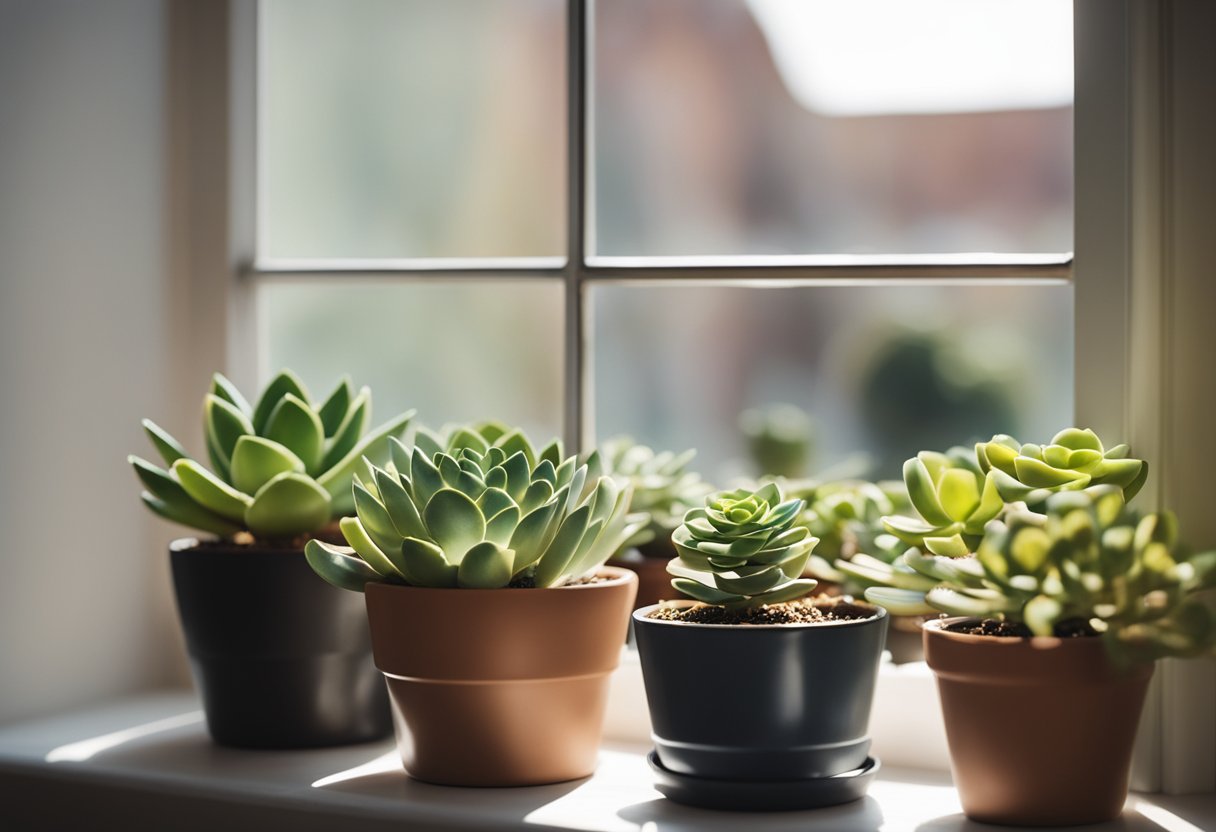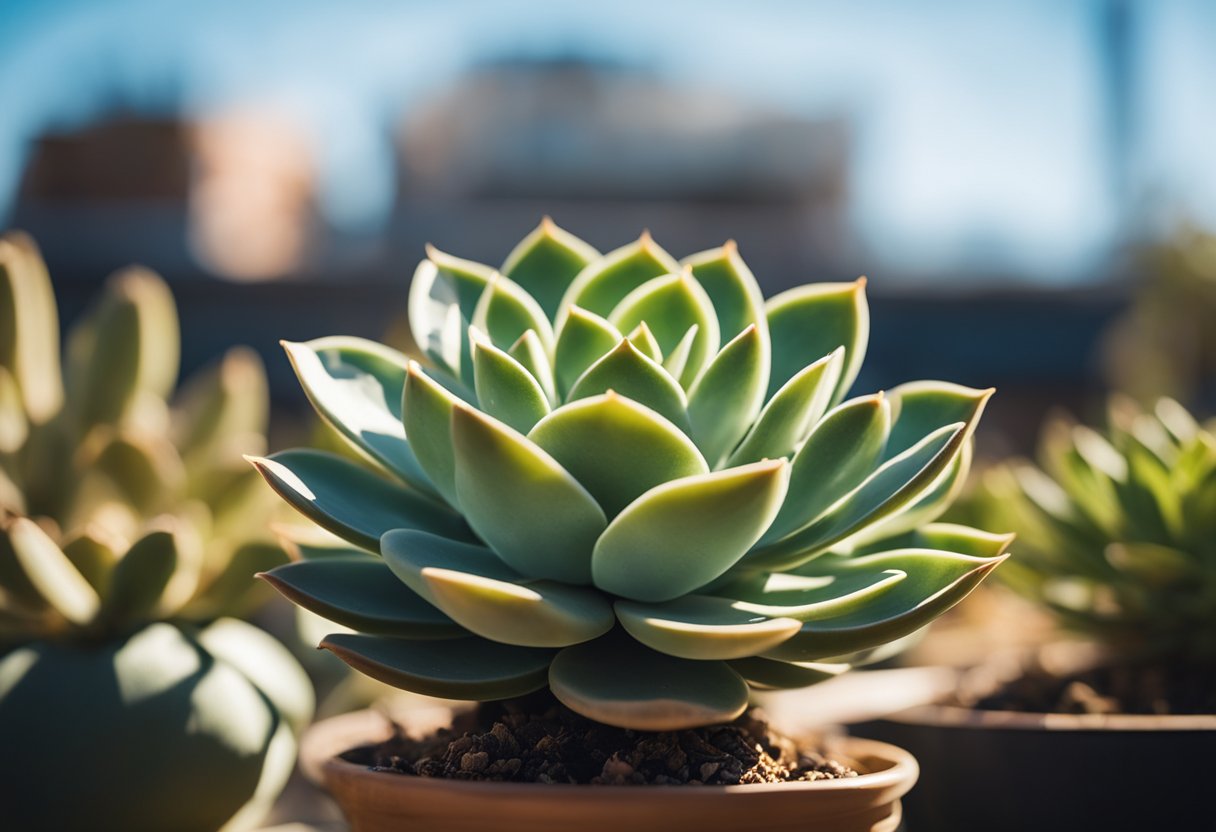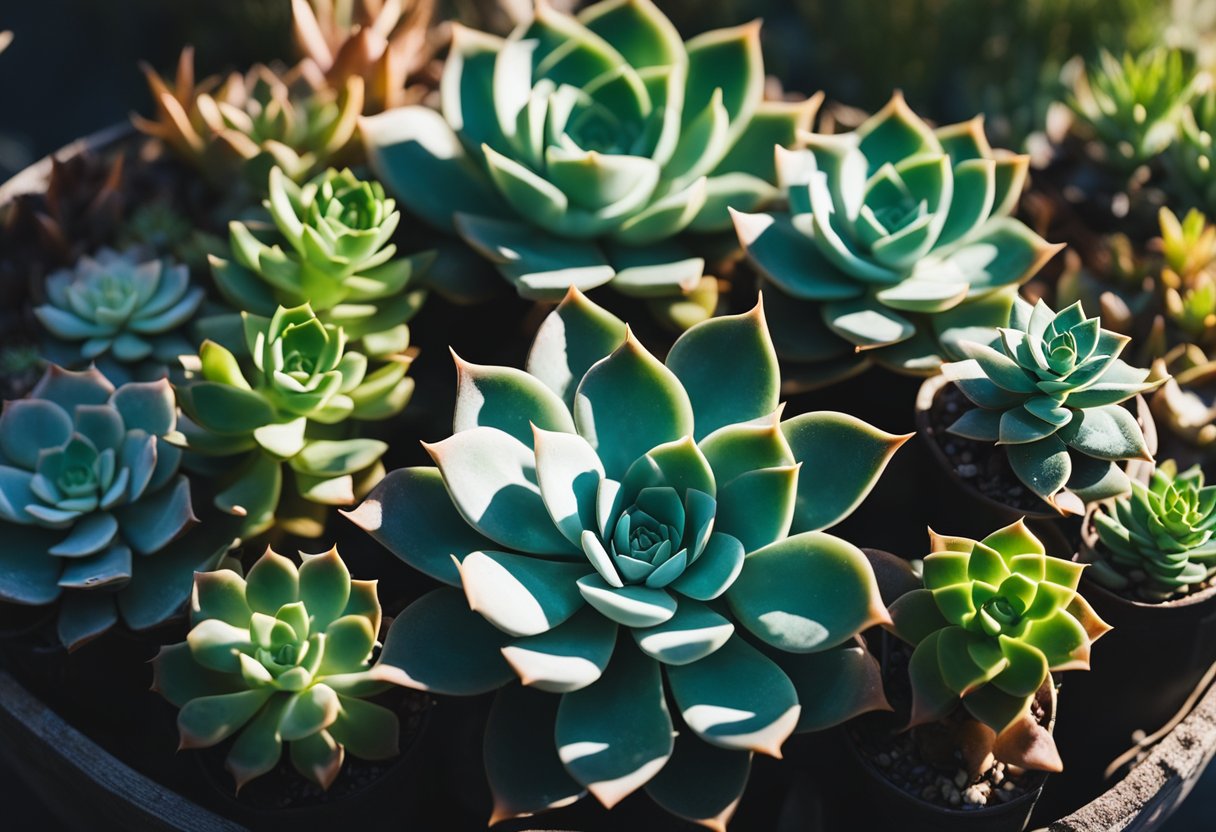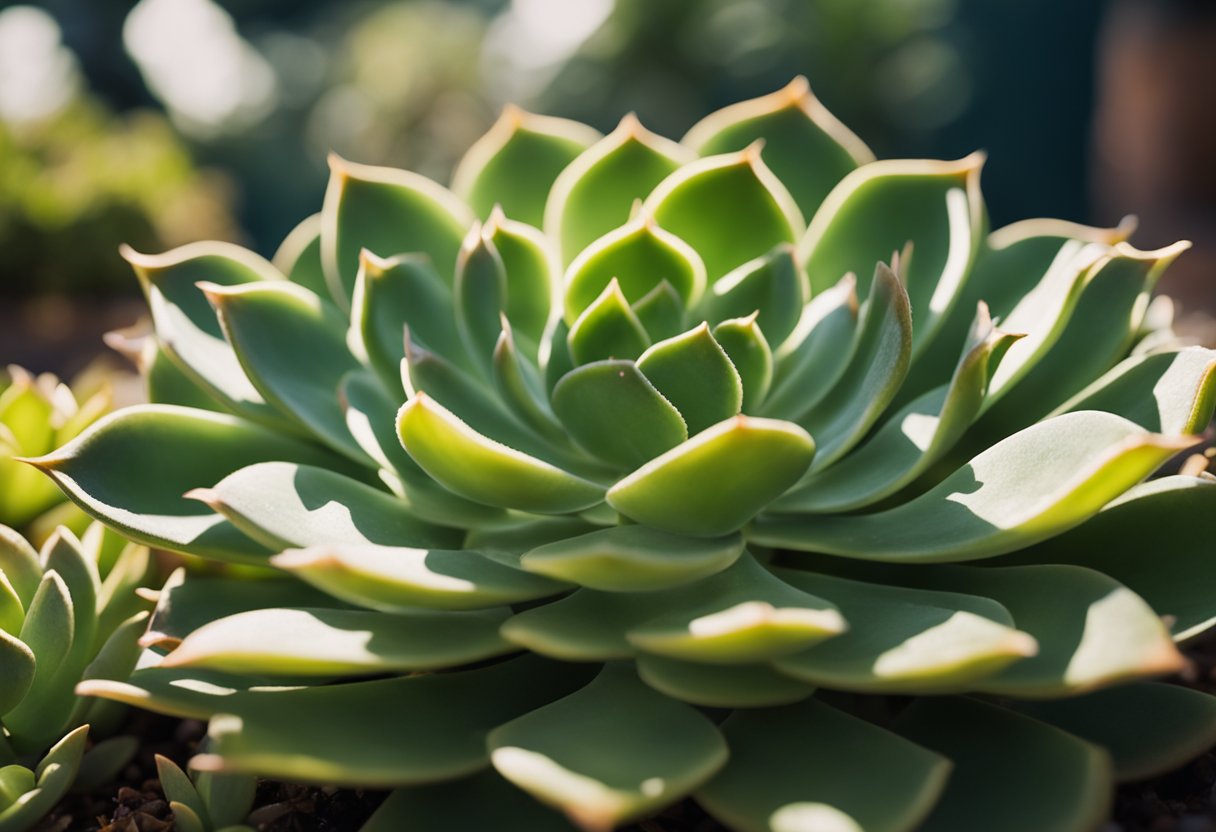Do Succulents Need Direct Sunlight?
Succulents are popular for their unique beauty and easy care. A common question beginners have is whether these plants need direct sunlight. Yes, most succulents thrive with some direct sunlight, but the amount can vary depending on the species. Knowing the ideal light conditions is crucial for keeping your succulents healthy and vibrant.

In some cases, too much direct sunlight can lead to problems like sunburn or scorched leaves. On the other hand, insufficient light can lead to weak and leggy growth. It’s important to understand how to balance sunlight exposure to avoid these issues and keep your plants thriving.
Key Takeaways
- Most succulents thrive with some direct sunlight.
- Too much sun can damage succulents.
- Light needs vary by species.
Understanding Succulents and Sunlight
Succulents have varying sunlight needs, influenced by their species and natural habitat. This affects how they perform photosynthesis, which is vital for their growth.
Photosynthesis in Succulents
Succulents are adapted to survive in dry conditions. They often use a special form of photosynthesis called CAM (Crassulacean Acid Metabolism). CAM photosynthesis helps succulents store water by opening their stomata at night to reduce evaporation.
Common succulents like cacti and agave thrive in bright, direct sunlight because they efficiently use this light to produce food. Others, such as the jade plant and kalanchoe, can get sunburned if exposed to hot, midday sun. It’s important to understand your succulent’s photosynthesis process to provide the right amount of light.
Diversity of Sunlight Needs Among Succulents
Different succulents have varying needs for light. For example, while aeonium and echeveria prefer several hours of direct sunlight, plants like haworthia and dracaena trifasciata do better in bright but indirect light.
Sedum can handle the full sun and adapt well to partial shade, making them versatile for outdoor settings. In contrast, gasteria needs less direct sunlight and thrives with filtered light. Knowing these preferences helps in positioning your plants in the right spot. If you want to know more about how much light succulents need, check out this guide.
Ideal Exposure to Sunlight for Succulent Health

Succulents thrive with a careful balance of sun exposure. They benefit from both full sun and bright shade depending on their type and environment. Knowing the right mix can keep these plants healthy and vibrant.
Balancing Direct Sun and Shade
Many succulents do well with several hours of direct sunlight each day. Outdoor succulents often thrive in full sun for about six hours, helping them stay robust and maintain vibrant colors. It’s important to gradually introduce indoor succulents to outdoor conditions to prevent sunburn, starting with a few hours of soft light.
Many years ago I carelessly put one of my jade plants outside in the spring only to watch at least a third of the leaves get scorched. Many of the leaves ended up falling off too. While I didn’t kill the plant, it certainly wasn’t happy about the abrupt change!
For indoor succulents, providing indirect sunlight or bright shade is key. You can place them near windows with filtered light to mimic natural conditions. Use sheer curtains to diffuse harsh sunlight and prevent your plants from overheating. This careful balancing ensures growth without the risk of scorching their leaves.
Indicators of Adequate Light
Observing your succulents can help determine if they’re getting enough light. Signs of adequate sun exposure include rich colors and compact growth. Lack of sunlight may cause your succulents to stretch, turning pale and leggy. This condition, known as etiolation, indicates the plant is seeking more light.
If your succulents display vibrant hues, like reds or purples, it’s a sign they’re receiving the right amount of sun. Rotating your plants regularly helps distribute light evenly, preventing any one side from becoming weak or discolored. Keeping an eye on these indicators helps tailor light conditions to your succulents’ needs.
Risks of Inappropriate Sunlight Exposure
Succulents can suffer from too much or too little light. Direct sunlight may cause sunburn, while insufficient light can lead to etiolation.
Preventing Sunburn in Succulents
Too much direct sun can cause sunburn, leading to brown, dry patches on succulent leaves. Intense sunlight during heatwaves increases the risk. It’s crucial to monitor signs of sun damage and protect your plants. You can do this by providing shade during the hottest parts of the day or moving your succulents to areas with filtered light.
Watering practices also play a role. Overwatering can make a plant more prone to damage by weakening its structure. This is because excess water may lead to root rot, making the plant less resilient to sun exposure. Watching for signs of sunburn helps you act before the damage becomes severe.
Understanding and Identifying Etiolation
Etiolation occurs when succulents don’t get enough sunlight, resulting in elongated, pale growth as the plant stretches toward light sources. This can weaken your succulent, making it prone to breakage. Regularly check for these signs of insufficient light to adjust your plant’s location accordingly.
To prevent etiolation, ensure your succulents get adequate light. Different types of succulents may have varying light requirements, so it’s essential to know your plant’s needs. Position your succulents near windows that receive bright light, but avoid excessive heat, which can lead to other issues such as sunburn.
Optimizing Indoor and Outdoor Sunlight Conditions
Balancing sunlight is key to thriving succulents, whether indoors or outdoors. Indoor succulents often need bright, indirect light, while those outdoors benefit from full sun, with careful management during heatwaves. Understanding these conditions will help you ensure healthy growth and vibrant plants.
Sunlight Strategies for Indoor Succulents
Indoor succulents typically need bright, indirect sunlight. Place them near south-facing windows where they can receive ample light without the risk of sunburn. Rotate your plants regularly to ensure even growth and prevent them from leaning toward the light.
If your home lacks bright spots, consider low-light succulents such as snake plants or pothos. These can thrive in less ideal lighting but still appreciate some indirect light. You might also use grow lights, especially in winter months, to supplement natural light. Keep an eye on humidity levels, though. Some succulents, like jade plants, prefer low humidity, so ensure your indoor air isn’t too moist.
Enhancing Outdoor Succulent Growth with Sunlight
Outdoor succulents generally thrive in full sun, usually around six hours a day. Start by gradually exposing them to sunlight if they’re transitioning from indoors. This helps adapt them without causing sunburn. Protect succulents from extreme heatwaves by providing shade during the hottest parts of the day.
For gardens with limited direct sunlight, use sunlit spots that receive morning light, as this is gentler. You can grow low-light succulents if your garden is mostly shaded. Consider the climate when placing succulents outdoors, especially in areas with high humidity, which may require extra drainage to avoid rot. Rotate pots to ensure all sides get sunlight, encouraging balanced growth.
Specific Sunlight Recommendations by Species

Different succulents have varied sunlight requirements. Some thrive in bright sunlight, while others do well in shaded areas. Understanding the specific needs of each species will help you provide the best care for your plants.
High-Light Succulents
Some succulents need plenty of direct sunlight to maintain their vibrant colors and healthy growth. Cacti and Echeveria are examples of high-light succulents. Place them in areas with at least six hours of full sun daily. This ensures they get enough light to flourish.
Agave is another succulent that prefers direct sunlight. It’s an ideal choice for sunny gardens. Agave can withstand the sun’s intensity and still grow robustly. Sedum is adaptable too, thriving in full sun but tolerating partial shade. These conditions help these succulents maintain their unique appearances.
Moderate to Low-Light Succulents
Some succulents do well in dimmer environments. Haworthia and Gasteria prefer bright, indirect sunlight and can manage in low-light settings. They’re suitable for indoor spaces like offices or windowsills with moderate light levels.
Dracaena trifasciata (often known as Snake Plant) is a hardy option that can tolerate low light. It’s perfect for rooms with limited sunlight. It also adapts well to changing light conditions, making it a versatile choice for beginners.
In areas with less sunlight, these species can still thrive without direct exposure. Make sure to monitor their growth to ensure they receive the right amount of light.
Frequently Asked Questions

Succulents have varying sunlight needs depending on their type. Some can thrive in indirect sunlight, while others require direct sun for proper growth. Understanding their sunlight preferences is key to ensuring their health and vibrant appearance.
Can succulents thrive in indirect sunlight?
Yes, many succulents can thrive in indirect sunlight. While some prefer bright, direct sunlight for optimal growth, others do just fine with bright, indirect light. It’s important to monitor your succulent’s growth to ensure it’s receiving enough light, but not too much that it causes stress.
How much light do succulents need to grow properly?
Most succulents need about 4 to 6 hours of sunlight daily for healthy growth. This can be a mix of direct and indirect sunlight. Ensuring they get enough light helps them retain their color and form. Too little light may cause them to stretch out in search of it.
What type of sunlight is best for succulent health?
Morning sunlight is often best for succulents, given its gentler intensity. Afternoon sun can be too harsh and lead to issues like leaf burn. Bright but diffused sunlight ensures they grow strong without overheating. Some sunlight needs can vary by species and climate.
Are there specific succulent species that prefer low light conditions?
Yes, some succulents like snake plants and certain haworthias can tolerate lower light conditions. These types are suitable for indoor settings with less direct sunlight. It is important to still provide them bright light at least some of the day to maintain their health and growth.
How does sunlight exposure affect succulent watering schedules?
Sunlight exposure directly affects how often you should water succulents. Plants in bright, direct sunlight dry out faster and may need more frequent watering. Conversely, those in lower light conditions hold onto moisture longer and require less frequent watering, preventing overwatering.
Can succulents be successfully grown indoors and if so, what are the light requirements?
Absolutely, succulents can be grown indoors. They require bright light, such as from a window, to thrive. South-facing windows are ideal, providing ample sunlight. If natural light is insufficient, using grow lights can help satisfy their light needs and ensure healthy growth indoors.
